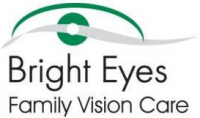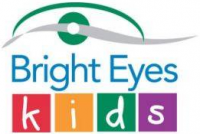 As readers of this blog and those that follow us on Twitter know, there is an exciting book was recently been published about a woman who achieved great success with vision therapy at age 48. It is called "Fixing My Gaze" by Susan Barry, Ph.D. It has been very popular and at one point was the 367th most sold book on Amazon.com
As readers of this blog and those that follow us on Twitter know, there is an exciting book was recently been published about a woman who achieved great success with vision therapy at age 48. It is called "Fixing My Gaze" by Susan Barry, Ph.D. It has been very popular and at one point was the 367th most sold book on Amazon.com
When the book was released, I pre-ordered copies for my office. I read it and had the staff read it. I loved the way Dr. Barry writes and her accessibility. In fact, I liked it so much that I recently held an online contest to give a copy away.
Well, the contest caught the attention of "Stereo Sue", as she is nicknamed, and she graciously agreed to an online interview.
Dr. B: Dr. Barry, thank you so much for being participating in this interview. I know that vision therapy programs can vary tremendously from patient to patient. How long was your office therapy with Dr. Ruggiero?
Sue: I had about 12 months of office therapy spread over one and one-half years.
How long before you saw definitive progress?
I began to see progress within the first month. My gaze appeared more stable and I began to notice pockets of space between objects.
Regardless of whether a patient is 5, 45, or 95 years old, vision therapy can be a lot of work. Was it hard to stay motivated?
Yes and no. The changes in my vision encouraged me to continue. I also saw myself as my own experiment and liked thinking about how I was changing my vision and what changes were occurring in my brain. The most important thing I did to keep motivated was to keep a journal of how far I could go with each procedure. This taught me that I was making progress even during the weeks when I felt that nothing was happening. My vision therapists were extremely encouraging and fun to work with. My optometrist, Dr. Theresa Ruggiero, was always so positive that she made me feel like I was 10 feet tall.
In "Fixing My Gaze" you mention several vision therapy activities such as Marsden Ball, Brock String and Vectograms. Is there one activity that was your favorite?
My favorite activity was the Brock string because it gave me the feedback to learn how to point my two eyes simultaneously at the same place in space. I could feel my eyes moving in concert and this was very exciting. The first time I saw stereo depth in the Polaroid vectograms - it was the clown vectogram - was also very special.
Now that you've had stereopsis for several years, do you find yourself at times taking it for granted as most people do?
No. My vision continues to improve and I have taken to walking everywhere just so I can feel myself moving through this three dimensional world. I am still surprised by what I can see. One advantage, I suppose, of not having stereovision for half a century is that I never take my vision for granted. I feel like I have been given a great gift.
You did such a marvelous job making the book accessible to many people from laypeople to doctors and scientists. Did you find that difficult to do, or did it come naturally?
I am a college biology professor and enjoy teaching, especially finding straightforward ways to explain complicated things. I learned this from my mother who was also a teacher. I also learned a great deal about vision from the many optometrists I spoke with.
Several people have commented on the readability of the book. What steps did you take to achieve this?
I made the decision about the font. I told the publisher that I wanted the book printed in Garamond font at the largest acceptable font size and spacing between letters, words, and lines. I was concerned that the people who might find the book interesting and beneficial are also the ones with difficulties tracking the letters on the page. The Harry
Potter books (which I loved) are printed in Garamond font, and one of the people I mention in my book had told me that he found Harry Potter easy to read because of the font and spacing. Also, my father, now 86, was a calligrapher and graphic designer and so I asked his advice about the fonts as well. He told me that the font should have some serifs (the little curley cues around the letters) as Sans Serif can be hard to read. However, the font should not be too complicated. We got out his old font books and looked over many different fonts and agreed that Garamond would work. I was very happy that the publisher honored my wishes here.
Thank you for writing "Fixing My Gaze." My colleagues and I are very happy about it. Have you been surprised at its reception?
I never expected my book to be embraced so enthusiastically by so many people from people with binocular vision problems to scientists to optometrists.
Thank you for your time. Is there anything else you'd like add before we go?
I hope my book will teach people that the brain is capable of rewiring at any age, will broadcast the importance and effectiveness of optometric vision therapy, and will help many children as they progress through school.
I encourage all my readers to read "Fixing My Gaze." You can get it at any bookstore or on Amazon.com. Alternatively, we have office copies that we are lending to patients. If you'd like to borrow a copy, just stop by Bright Eyes and ask for one.
Nathan Bonilla-Warford, OD
Bright Eyes Family Vision Care
Located in the Westchase area of Tampa.
Update: Here are some links for more information:
Audio Podcast Interview with Susan Barry
http://www.perseuspodcasts.com/main/podcasts/book.php?
isbn=9780465009138
Print Q&A with Sue from the New Scientist, June 6, 2009
http://www.newscientist.com/article/mg20227112.900-how-i-learned-to-
see-in-3d.html
Sue’s Psychology Today Blog, Eyes on the Brain
http://blogs.psychologytoday.com/blog/eyes-the-brain
Los Angeles Times OpEd
http://www.latimes.com/news/opinion/commentary/la-oe-barry22-
2009jun22,0,350826.story


Hi Nate, It's Erica Lukasko, from ICO. I've recently heard about this book so I googled it and found you! I'm glad to see you have your own vision therapy practice. I hope it's going well. I'm working with a pediatric ophthalmologist in Lafayette, LA doing full scope optometry. http://www.lafayetteeyecare.com We treat a lot of amblyopia so I'm interested in the book and plan on reading it. Take care! Erica
Hi Nate, It's Erica Lukasko, from ICO. I've recently heard about this book so I googled it and found you! I'm glad to see you have your own vision therapy practice. I hope it's going well. I'm working with a pediatric ophthalmologist in Lafayette, LA doing full scope optometry. http://www.lafayetteeyecare.com We treat a lot of amblyopia so I'm interested in the book and plan on reading it. Take care! Erica
[…] you read Susan Barry’s book, “Fixing My Gaze“? I very highly recommend it. You may also find this blog interesting: […]
[…] word, but because I am genuinely interested in their background and the process of writing. Like Fixing My Gaze, Jillian’s Story is one of those books that does a better job of explaining vision therapy […]
[…] shared many copies with friends, held an online contest to give a the book as a prize, and even interviewed Dr. Barry. So I was delighted to see this morning that the book has been selected as the #4 top science book […]
[…] option to give 3-D vision to patients, young or old. The book “Fixing My Gaze” by Dr. Susan Barry is an excellent example of […]